Sydenham Hill is fascinating. It rises higher than most in London, topping 350 feet at the southern end of the road that shares its name. Thus the simultaneous release of both areas’ Lloyd George Domesday records by TheGenealogist and linking them to its Map Explorer™ allows us to take a look at this interesting part of the metropolis. Perhaps the most iconic building that once stood there was the Crystal Palace, relocated from Hyde Park after the Great Exhibition had closed in 1851. The building, reconstructed in a non-identical form from its earlier incarnation in Hyde Park, incorporated most of the constructional parts of the original Great Exhibition building but at Penge it was considered to be a quite different structure altogether. The grounds it occupied, on the border between Lewisham and Bromley, fell into the latter area and the massive edifice was then erected where formerly a property called Penge Place had once stood on land cut out from Penge Common at the top of Sydenham Hill.
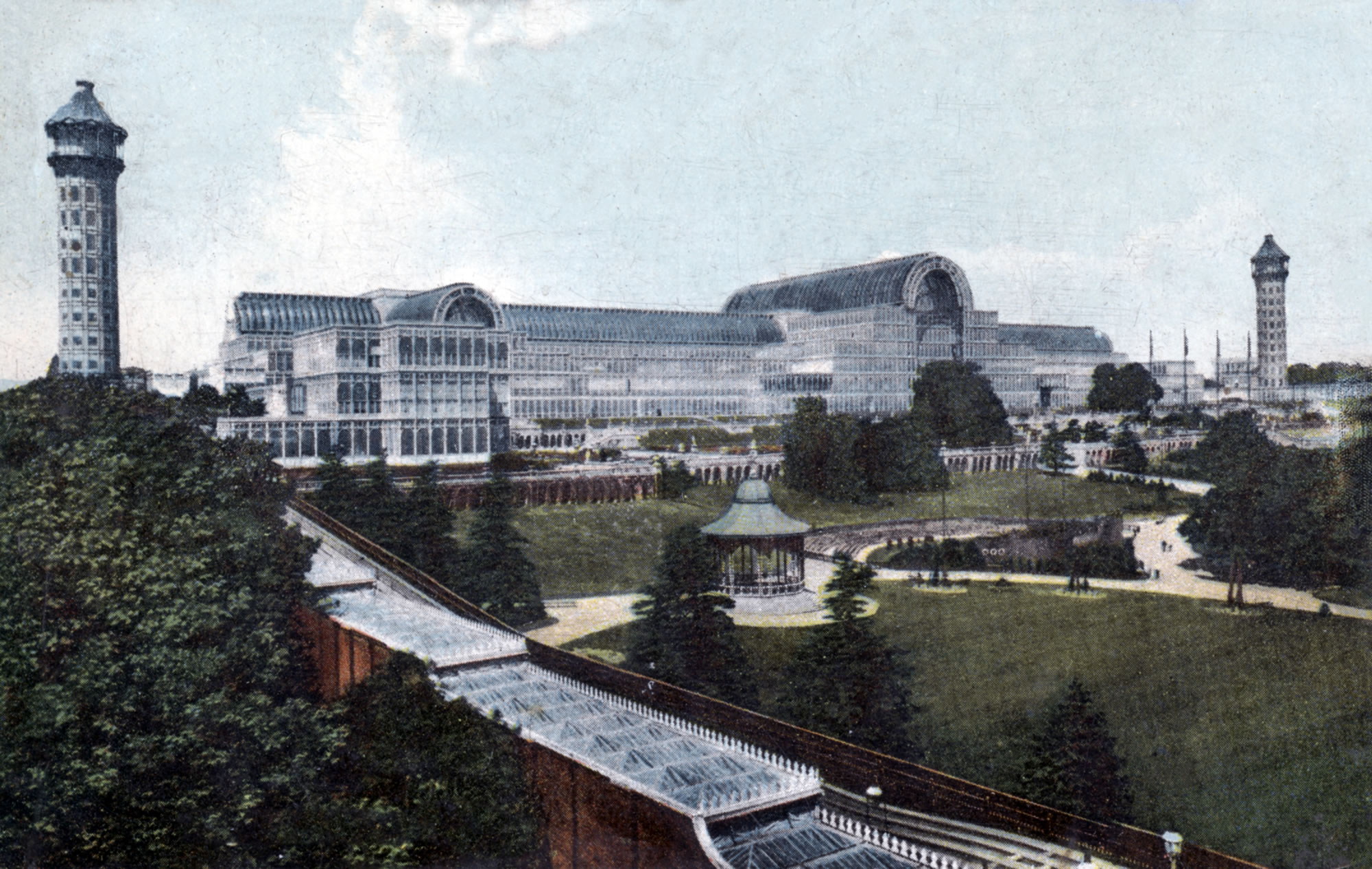
While the building no longer survives today, as its demise would come about in 1936 when destroyed by fire, in the survey carried out in the 1910s by the Valuation Office of the Inland Revenue the Crystal Palace was still standing. Thus we are able to find records for it and see that it was valued at £130,000 then, the equivalent of about £14,120,000 today.
The owner and occupier at this time was recorded as a Mr Ernest Husey who we can see was listed in his capacity as an official appointed to front up the company that owned the Crystal Palace in this decade. The Field book image of the IR58 record shows us that Ernest Innes Husey is the Receiver & Manager On Behalf of the First Debenture Stockholders of the Crystal Palace Company. We can then use the 1910 Kelly’s Post Office Directory from the Trade, Residential & Telephone records on TheGenealogist which allows us to determine that Husey was a partner in the firm of Jackson, Pixley, Browning, Husey & Co, Chartered Accountants, of 58 Coleman Street, London.
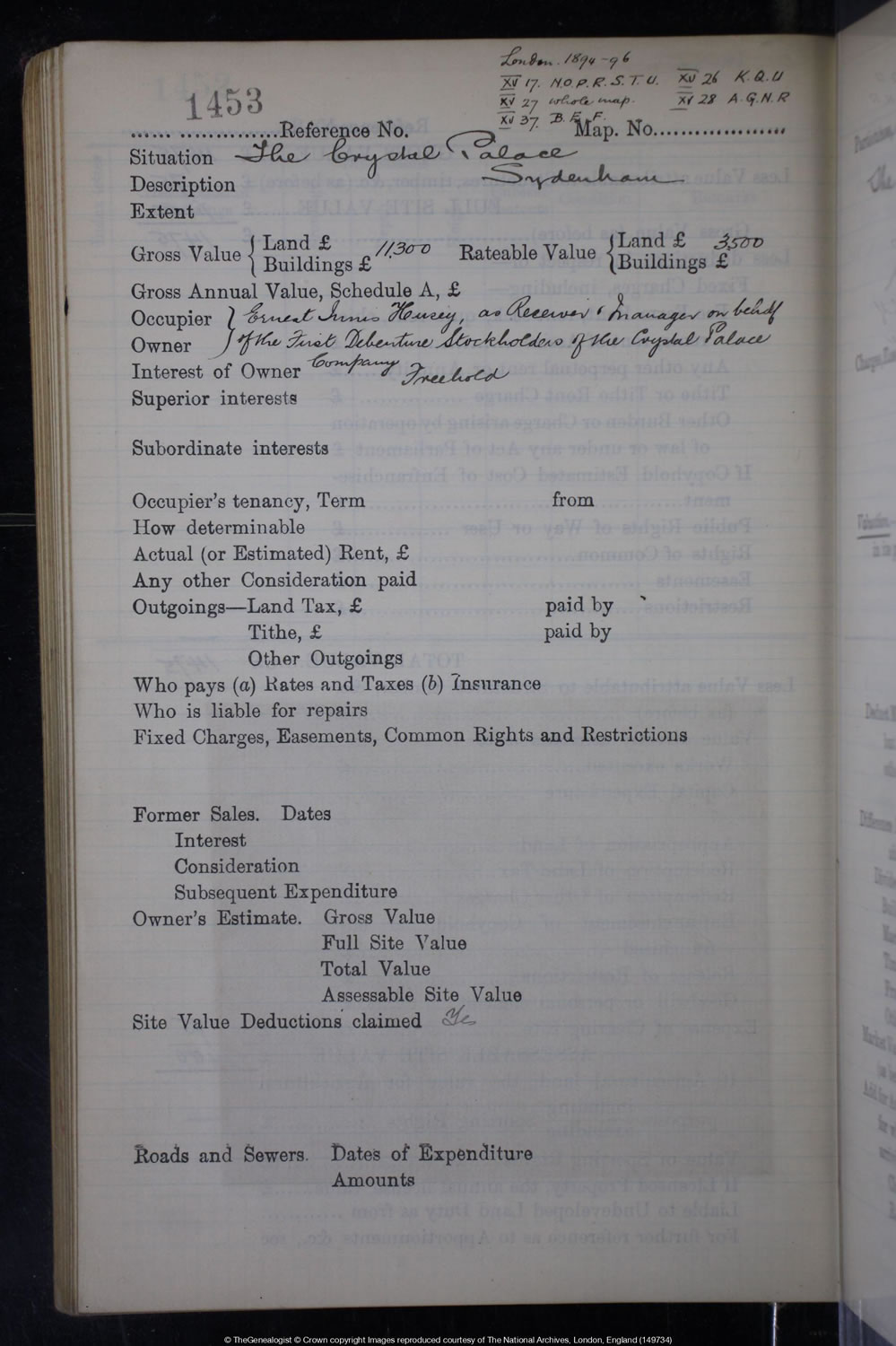
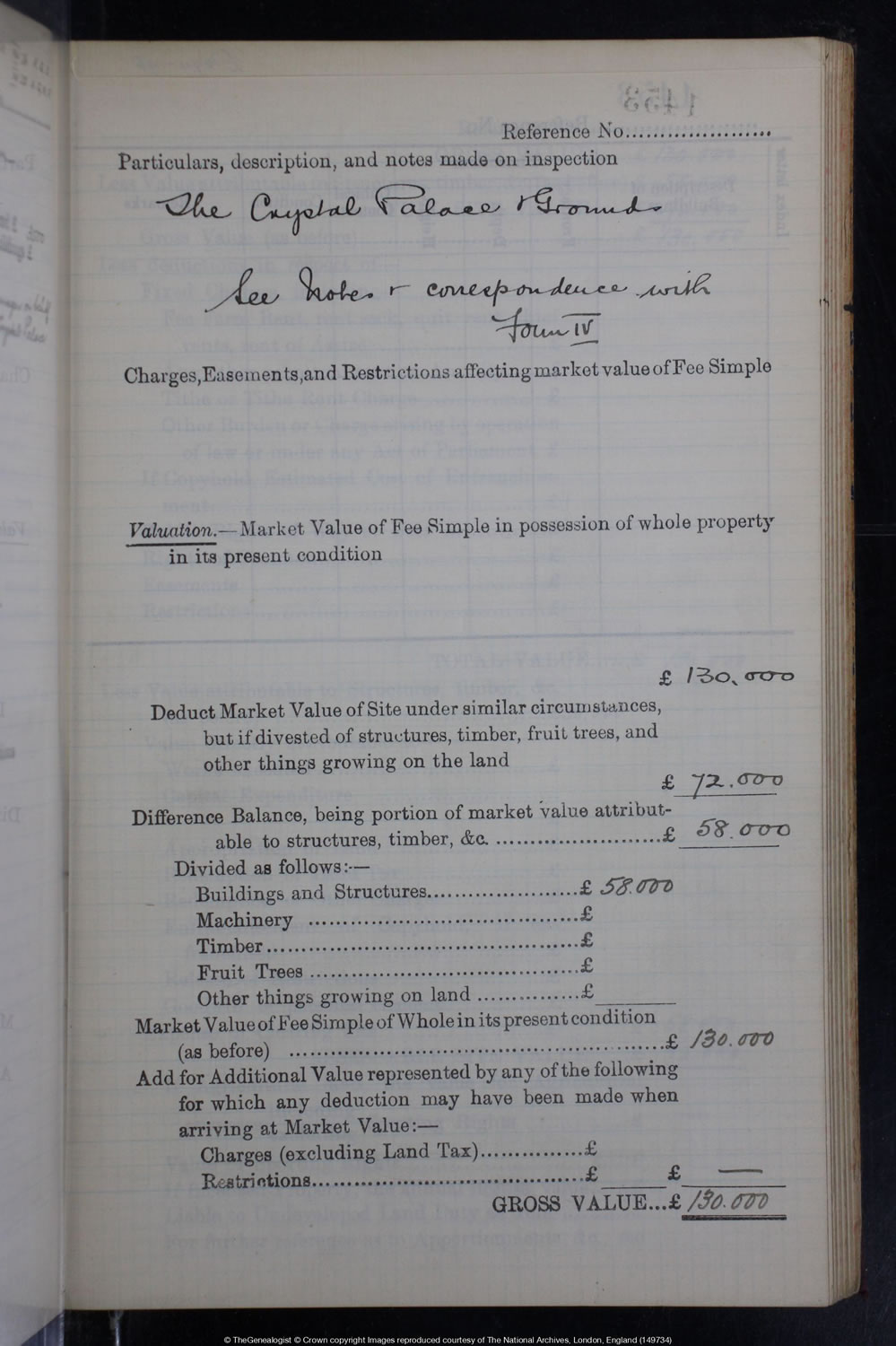
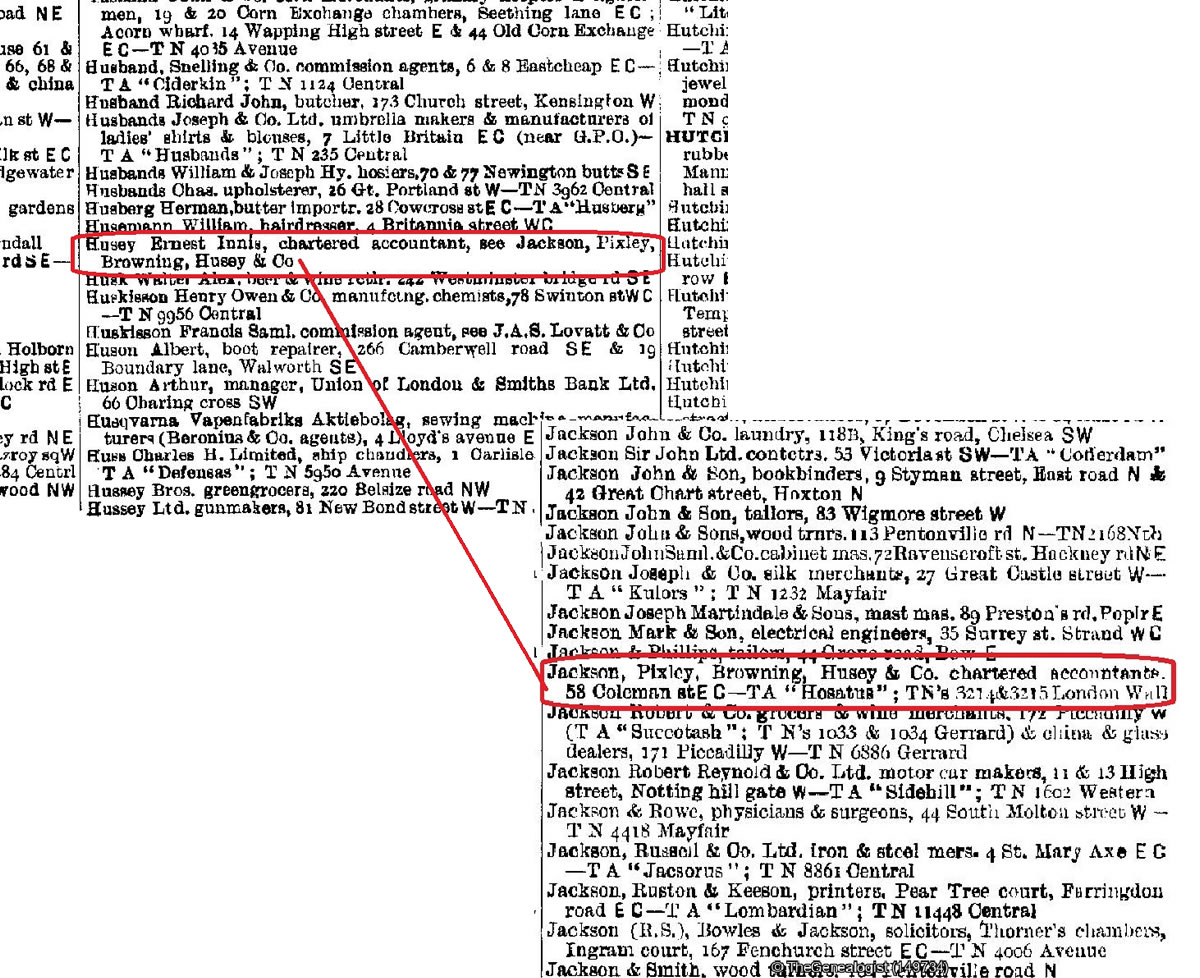
Claimed by various areas
Several localities would lay claim to be the area to which the former Great Exhibition building had been moved to in the 1850s. Sydenham (part of the Lewisham Valuation Office for IR58 records) was one that claimed the Crystal Palace. Its claim was because the street address of the entrance to the building was in Sydenham (SE26) after 1917. The actual building and parklands, however, were definitely in Penge (Bromley Valuation Office) as we can see by using TheGenealogist’s Map Explorer™ and selecting from the advanced dropdown menu from the record set the ‘Show Historic Ward’. This setting will display the boundaries and shade the wards different colours and by hovering the cursor over each area displays the name of each ward. From this we are able to see that the building footprint is in the green coloured Penge ward. Some of the grounds, however, fall into Beckenham, a pink hue on the map of wards and still part of Bromley for IR58 purposes. The entrance into the former building is in Dulwich (Southwark Valuation Office) identified on the map as a lavender blue. If we then take a look at the area to the north of the park we see the road that is called West Hill and the properties that fall into Lower Sydenham, identified on the map as a grey green and which are a part of the Lewisham area.
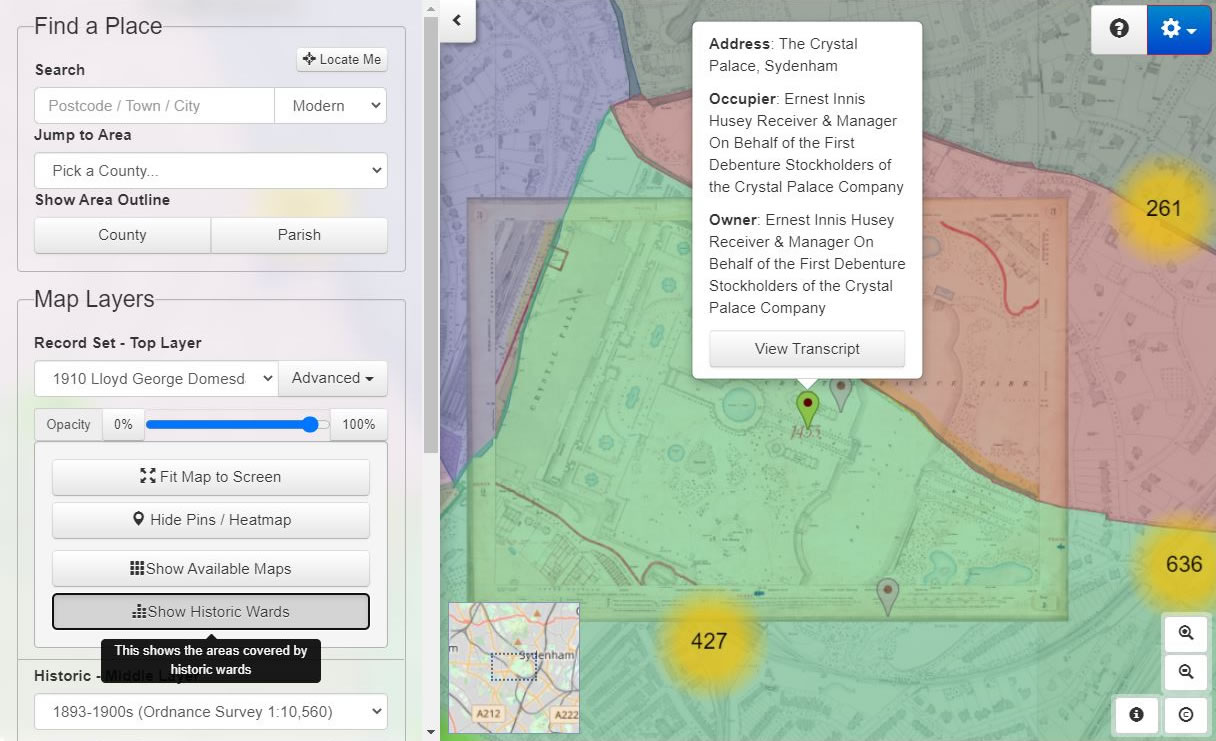
When the Crystal Palace first went up in the years after 1851, most of the buildings were in the County of Surrey, as were the majority of grounds, but in 1899 the county boundary was moved, transferring the entire site to Penge Urban District in Kent. Today the site is now within the Crystal Palace Ward of the London Borough of Bromley.
The Map Explorer™ presents us with a number of different historical and modern georeferenced maps to see the exact same location at different times. With the Lloyd George Domesday Survey maps being one of the recordsets that is linked to this resource means that we can now explore Crystal Palace in more detail and see how the former building’s footprint has been laid down to trees and grass today. The many fountains of the Victorian pleasure gardens are no more, but the park now boasts a modern athletics stadium and National Sports Centre in an area that had been set aside for sports even in the past.


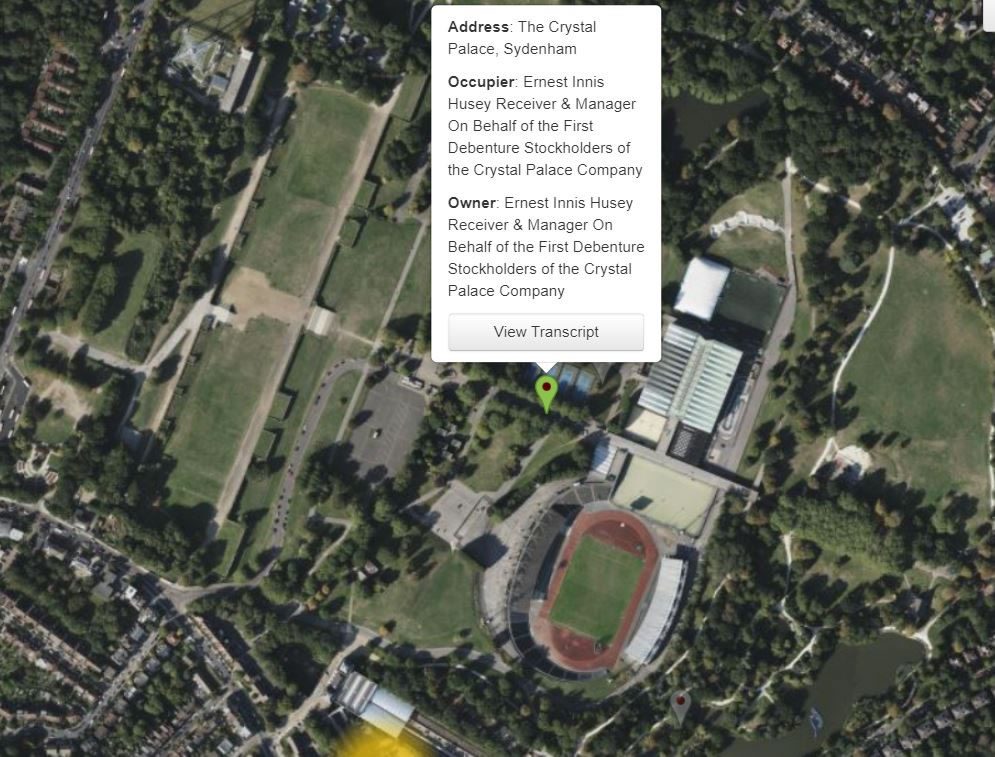
The Baronet of The Wood, Sydenham Hill

Just up the road from the Crystal Palace, in Lower Sydenham we can see from a look at the Lloyd George Domesday Survey maps that Sydenham Hill boasts a number of comfortable villas. With the attraction of the palace nearby and the benefits that the railways had brought to this area, numerous large houses with their own grounds were built on the hill. This was, especially so in the third quarter of the 19th century when some of them were luxurious and quite palatial in size.
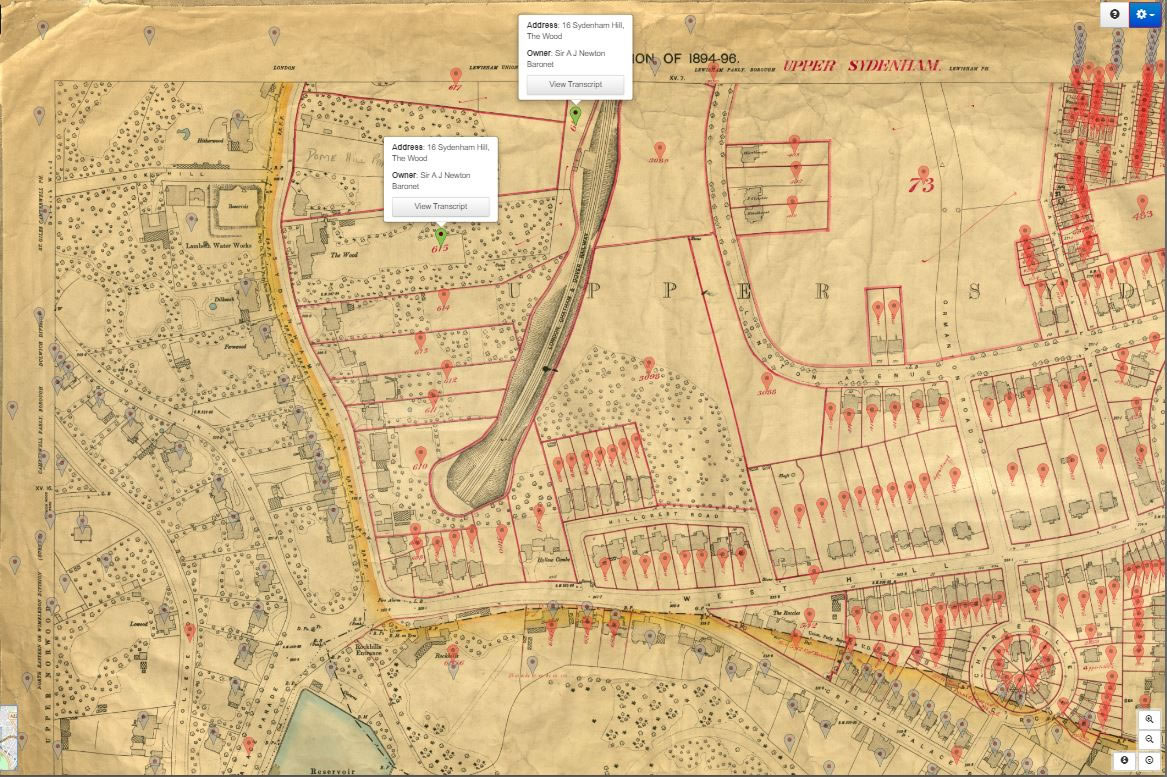
One of these mansions is named The Wood at 16 Sydenham Hill and was the home of Sir Alfred. J. Newton, Baronet. Searching within the Lewisham Valuation Office records the property is recorded in the field books for Upper Sydenham and is, according to the surveyor “In splendid condition and well preserved.”

The house, we are able to read, sat in over 4 acres of land and is in stock brick with stone dressing and had been pebbledashed to the front. The ground floor has 3 large rooms and a conservatory and on the first floor are to be found 6 rooms, a dressing room, baths and WC. A new wing had been added that included a Billiard Room, a “Massive marble fireplace and an Oak staircase and WC”. Above this level were another 5 bedrooms and 2 bathrooms. The valuation shows an amendment at some stage of the proceedings when the original estimate of £3,000 has been significantly increased to £4,000 in red ink.
Access Over a Billion Records
Try a four-month Diamond subscription and we’ll apply a lifetime discount making it just £44.95 (standard price £64.95). You’ll gain access to all of our exclusive record collections and unique search tools (Along with Censuses, BMDs, Wills and more), providing you with the best resources online to discover your family history story.
We’ll also give you a free 12-month subscription to Discover Your Ancestors online magazine (worth £24.99), so you can read more great Family History research articles like this!


“Nothing short of a Scandal”
Alfred James Newton, the owner of The Wood, Sydenham Hill, had been born in Hull in 1845. After partaking in several business interests with his father and brothers he had then become involved with the stock market flotation of several private companies. In 1889 Newton was appointed chairman of the board of Harrods Store, raising capital to buy the department store from Charles Digby Harrod for £100,000. There then followed several other departmental store purchases with his involvement.
During the 1890s he was now making his mark in the ‘square mile’ holding the posts as the master of three City of London Livery Companies. In 1889 he was nominated for the position of the Sheriff of London and Middlesex and was duly appointed. The next year saw him become the Alderman of the Ward of Bassishaw, a Lieutenant of the City of London and in 1899 he reached the pinnacle when he became the Lord Mayor of London for a one year term.
In what should have been his crowning achievement, at the same time he came under some scrutiny over his business practices. The episode, as detailed on Wikipedia (https://en.wikipedia.org/wiki/Sir_Alfred_Newton,_1st_Baronet), involved a share flotation that he had been connected to concerning another store called Grice and Son of Clapham. The disquiet revolved around the fact that the department store business had been purchased by a company called Industrial Contract Corporation (Limited) for the sum of £16,000 in about 1897, and then sold to another company, Auxiliary Stores for £48,000 (equivalent to approximately £5,716,000 in 2022). The problem, as shareholders of the first company saw it, was that both Auxiliary Stores and Industrial Contract Corporation had the same directors! These were Alfred Newton, Richard Burbidge (the general manager of Harrods) James Bailey (another director of Harrods) and James Jackson (a director of J. R. Roberts’ Stores). These directors attempted to wind-up the first company, but the shareholders of Industrial Contract Corporation were unhappy with the terms that they were being offered. There then followed threats of court action before an agreement was reached between the parties.
The agreement, however, didn’t end the story as on being officially introduced to the newly appointed Lord Mayor Newton, the Lord Chief Justice publicly expressed his concern about the new Lord Mayor’s involvement with the Industrial Contract Corporation. To try and resolve the matter, Newton instigated formal winding up proceedings to be heard before a Chancery judge and which would see a public examination of the matter. At the end of the court investigations the Chancery judge, in his summary, stated that the memorandum of the articles of association of the company were nothing short of a scandal. Shareholders, it emerged, had not been made aware of the profit that the directors would take and that the holders of founders’ shares had the same rights of voting as the total number of other shareholders.
Scandal apart, Newton received from Queen Victoria an honour in 1900 when she conferred a Baronetcy on him in connection with him raising the City of London Imperial Volunteers to fight in South Africa. Becoming 1st Baronet Newton, of The Wood, Sydenham Hill, Lewisham, Kent and Kottingham House, Burton-on-Trent, co. Stafford, he took the name of his houses as his territorial designation. The Wood being the mansion that we have been looking at in the Lloyd George Domesday Survey here.

Sentenced Sylvia Pankhurst
While having had his own run in with the judiciary, at the the end of the 1890s, Sir Alfred Newton sat as a magistrate by virtue of being an Alderman of the City of London and it was as such that on 20 October 1920 Sylvia Pankhurst, the suffragette and editor of the newspaper The Workers Dreadnought, appeared before him accused of sedition. The case had been brought because of four articles published in her paper. She defended herself but was found guilty and sentenced by Newton to six months.
The next year, in 1921, aged 76 Newton died suddenly from heart failure at Harrods having just arrived at the store in a car from his home. Newton had had a seizure and fell back into his seat next to his wife. A doctor attended him but could do nothing as Newton was already dead. It later transpired that there was a high dosage of strychnine in his indigestion medicine, enough to kill a large number of people. The medicine had been made up on prescription by the Harrods’ pharmacist, though how the strychnine got into the medicine was not established in the inquiry. The inquest jury returned a verdict of death due to heart failure as the doctor who carried out the postmortem told them that Newton’s heart was in a poor condition and that he would not have lived much longer, even though the poison had contributed to his demise. The mystery of why there was strychnine in his medicine bottle was not cleared up by the inquest proceedings and seems to continue to remain a puzzle.
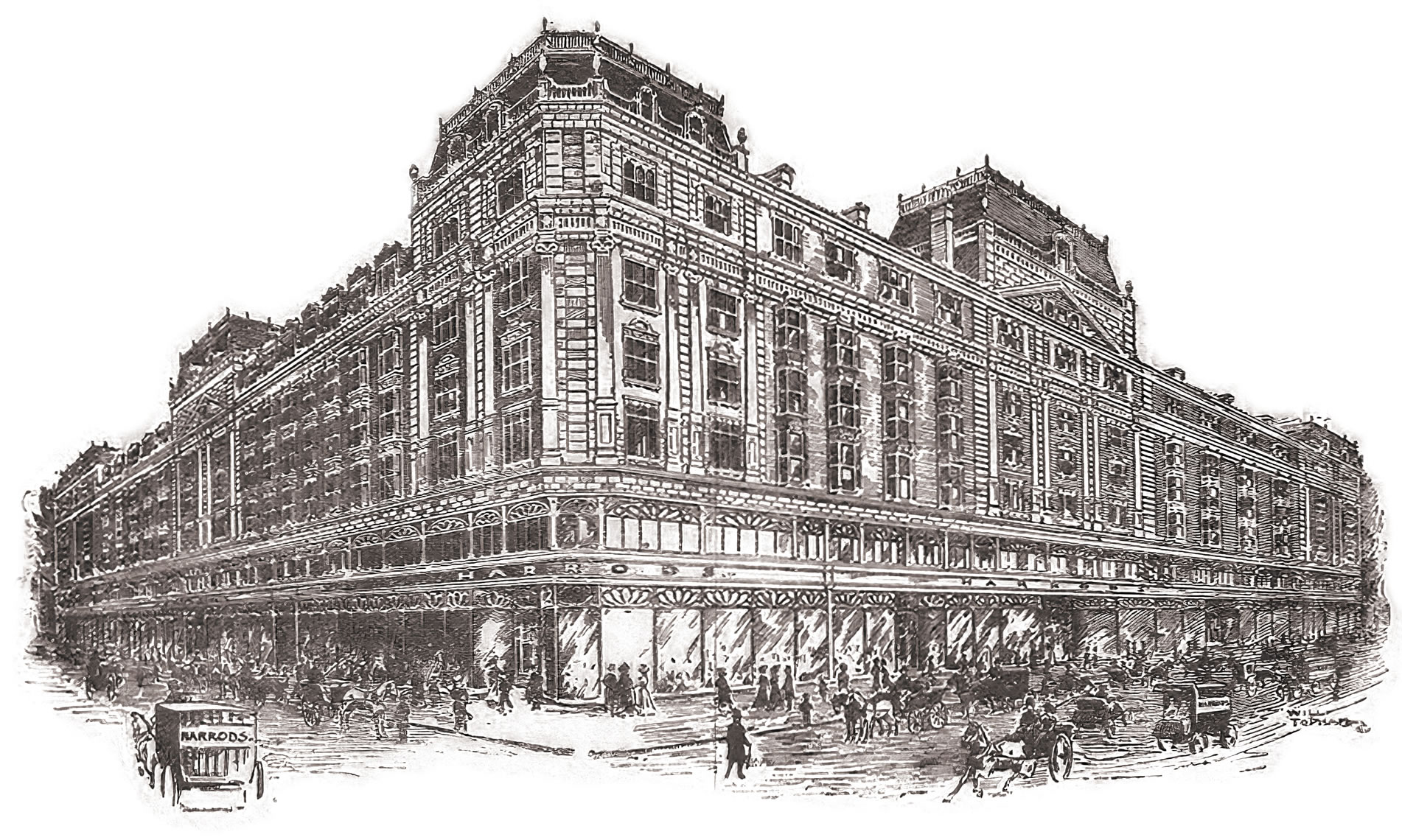
His home at Upper Sydenham, which we have seen in the Lloyd George Domesday Survey contained no less than 11 bedrooms in his time, still appears on a modern map though it is now converted into a number of flats.
The release of the Lloyd George Domesday Records for Lewisham and the adjacent area of Bromley have allowed us to investigate a fascinating area of London from just before the First World War when the Crystal Palace was still standing at the time. Open for public exhibitions it had been transported to this spot more than half a century earlier and set down in beautiful pleasure gardens at the convergence of the areas of Lewisham, Bromley and Southwark. The palace, having been lost to the nation in the 1930s, its footprint on the modern map on Map Explorer™ can now be seen to be planted with trees and grass. Meanwhile the fashionable area of Sydenham Hill, that rises north from the Crystal Palace Park, is still mostly residential with palatial villas still set in leafy grounds today. With the Lloyd George Domesday Survey records we have been able to travel back to the period 1910-1914 to a time when the controversial Harrods chairman and one time Lord Mayor of the City of London kept a splendid and well preserved home on this hill and gain an insight into a different period of this fascinating area.






